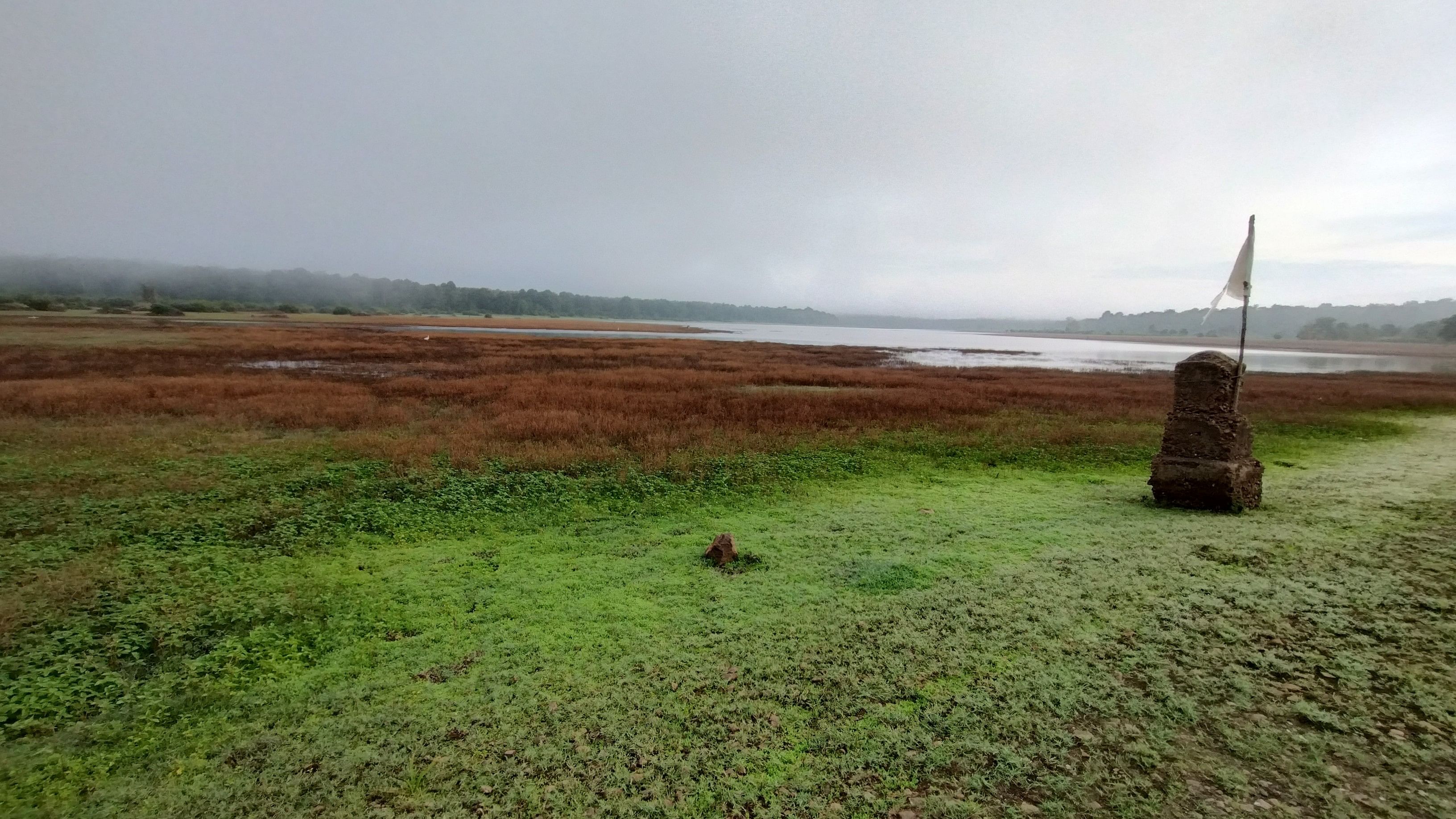
The Kabini waters, which had water till the flag post last year, is almost dry now.
Credit: DH photo/Pavan Kumar H
Forest officials and environmentalists fear that the current trend of below-average rainfall could result in an increase in human-animal conflict and fire incidents in the coming days.
Range Forest Officers (RFOs) of at least three ranges in Nagarahole and Bandipur confirmed to DH that several water bodies inside the tiger reserves are completely dry or depleted compared to last year. The situation is similar in other tiger reserves like Bhadra and Kali (KTR).
Foresters in tiger reserves, particularly in Mysuru and Chamarajnagar districts are pinning their hopes on the North-East Monsoon to replenish water bodies in Nagarahole, Bandipur and Biligiri Ranganathaswamy Temple (BRT) Tiger reserves. Bhadra and KTR do not benefit much from the retreating monsoon.
Kabini backwaters, which is one of the main sources of water for wild animals of both Bandipur and Nagarahole is almost dry, while the water level in the Kabini river is far less compared to last year.
“There was at least six feet of water in the backwaters last year during the same period. However, this year, there is hardly any water. This is for the first time in the last eight years that the water level is so low,” said a watcher who has worked at Bhogeshwara anti-poaching camp on the backwaters of Kabini for the past 35 years.
Multiple sources in the two tiger reserves informed DH that several streams and brooks that empty themselves into Kabini, Nagarahole and Kaveri and provide water to wild animals are dry.
Siddappa Setty, a Senior Fellow Scientist at Ashoka Trust for Research in Ecology and the Environment working in BRT Hills says that compared to previous years, the water levels in water bodies in the forest are very low.
“Perhaps, wildlife can manage the water needs till December and January, but from February, the fauna, especially elephants and large herbivores will experience water shortage. Wild animals, especially elephants, will venture into larger water bodies in neighbouring to villages,” he said.
He added that the department should start planning from now to ensure water availability for wild animals within the forest landscapes to keep animals safe in protected areas.
Bandipur Tiger Reserve field director Rameshkumar P conceded that there could be water scarcity in January if the North-East monsoon also fails. “The tiger reserve has more than 49 solar-powered tube wells that can refill water tanks and lakes to ensure that wild animals do not venture out,” he said.
However, experts point out that an artificial supply of water is not a long-term solution. “Wild animals, especially elephants, require large quantities of water. Borewells and tankers cannot quench their thirst. We need a better water management plan,” said Shivamogga-based bio-diversity researcher Dr Nanda Appaji.
People on the ground fear an increase in fire incidents in the summer months. “Due to scanty rainfall, the trees in the forest will dry up fast. This could result in more fire incidents,” said Giridhar Kulkarni, an environmentalist.
Additional Principal Chief Conservator of Forests (Wild Life) Kumar Pushkar said that unlike the reservoirs that have limited water stored, tanks, lakes and artificial water bodies inside the forests of Karnataka have stored sufficient water.
“The department is monitoring the water situation and will take a call in January on how to mitigate the water crisis in high-density wild animal areas,” he said and added that to address the fire contingency, the department will hire more human resources and implement the fire management plan.